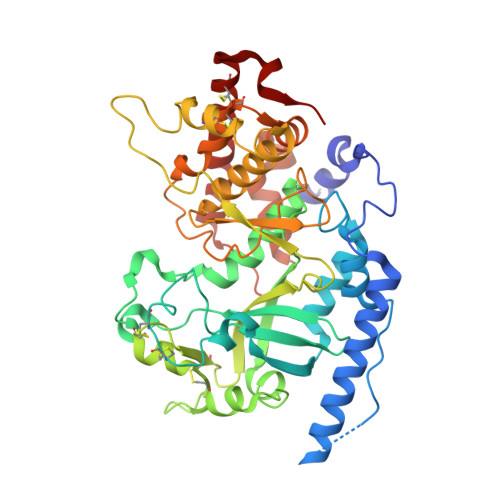Structure of Fam20A reveals a pseudokinase featuring a unique disulfide pattern and inverted ATP-binding
Cui, J., Zhu, Q., Zhang, H., Cianfrocco, M.A., Leschziner, A.E., Dixon, J.E., Xiao, J.(2017) Elife 6
- PubMed: 28432788
- DOI: https://doi.org/10.7554/eLife.23990
- Primary Citation of Related Structures:
5WRR, 5WRS - PubMed Abstract:
Mutations in FAM20A cause tooth enamel defects known as Amelogenesis Imperfecta (AI) and renal calcification. We previously showed that Fam20A is a secretory pathway pseudokinase and allosterically activates the physiological casein kinase Fam20C to phosphorylate secreted proteins important for biomineralization (Cui et al., 2015). Here we report the nucleotide-free and ATP-bound structures of Fam20A. Fam20A exhibits a distinct disulfide bond pattern mediated by a unique insertion region. Loss of this insertion due to abnormal mRNA splicing interferes with the structure and function of Fam20A, resulting in AI. Fam20A binds ATP in the absence of divalent cations, and strikingly, ATP is bound in an inverted orientation compared to other kinases. Fam20A forms a dimer in the crystal, and residues in the dimer interface are critical for Fam20C activation. Together, these results provide structural insights into the function of Fam20A and shed light on the mechanism by which Fam20A mutations cause disease.
- Department of Pharmacology, University of California, San Diego, United States.
Organizational Affiliation:



















